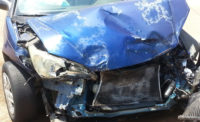Posted with permission from Fairwarning.org:
The chairman of the U.S. Consumer Product Safety Commission threatened Wednesday to hit furniture makers with mandatory federal rules if the industry doesn’t strengthen its voluntary standards to prevent its products from tipping over and killing children.
“The current standard just does not get the job done and it needs to be revised now,” said CPSC Chairman Elliot Kaye.
His remarks came during a conference call with reporters to discuss a report by the commission’s staff that found that the furniture industry’s current standards are insufficient and, at the same time, widely ignored. “It is a deeply troubling report,” Kaye said.
A separate report by the commission found that at least 489 people – mainly small children – died from 2000 to 2015 when furniture, televisions or appliances tipped over and crushed them. That report also estimates that 33,100 people went to the emergency room annually for injuries related to tip-overs from 2013 to 2015. The report calls tip-overs “one of the top hidden hazards in the home.”
FairWarning first wrote in 2012 about the danger of tip-overs and the CPSC’s faltering efforts to stop them. Kaye said Wednesday that the commission “has been struggling with this issue for a long time,” adding “I am extremely impatient about the lack of progress.”
The home furnishings giant IKEA announced in June that it was recalling about 180 models of chests and dressers that it admitted do not meet the voluntary safety standards. That included the popular MALM-style dresser, which has killed at least three children by tipping over and crushing them.
By law, the CPSC must defer to voluntary standards if they are effective and widely followed by product makers. The CPSC prefers industries to write their own guidelines because adopting a new federal rule can be arduous and time-consuming, with lengthy public comment periods. Together with a follow-up review by the White House Office of Management and Budget, the process can drag on for at least a couple of years. After all of that, industry groups sometimes mount court challenges that leave consumers unprotected for even longer periods.
The tip-over standards, which are administered by the group ASTM International, now require that dressers and other clothing storage units be able to remain stable if a 50-pound child were to climb on them. The current version of the voluntary standards was adopted in 2014.
The new technical report concludes that the weight requirement should be increased to 60 pounds because nearly all 5-year-olds weigh that much, and because children at that age are likely to climb on furniture. In addition, the report faults the voluntary standards for not specifying where tip-over warning labels should be placed and for lacking explicit pass or fail criteria for tip-over restraints, such as wall anchors. It also criticized manufacturers for either failing to include anchors or for including anchors that were insufficient.
As part of the technical report, the commission also tested 61 chests and dressers to see if they meet the current stability requirements. Thirty-one failed. Using those results, the commission developed a formula to project how much force is needed on an open drawer to tip over a dresser. Based on that formula, the commission projects that nearly a quarter of 531 chests and dressers it surveyed would fail the stability requirements of the voluntary standards.
Kaye said the commission’s findings are “very consistent” with a recent report by product safety advocates at Kids in Danger and Shane’s Foundation. Their report found that even when furniture manufacturers abide by the voluntary standards children may still be in danger of being crushed.
Andy Counts, chief executive of the American Home Furnishings Alliance, a trade group representing furniture makers, said in a prepared statement that the industry supports making the existing voluntary standards mandatory. However, Counts said “nothing” provided by the CPSC in its recent reports demonstrates that the current version of the standards is not adequate.
Instead, he said, the problem stems from companies that don’t comply with the existing standards.
Counts pointed out that the CPSC statistics do not indicate how many, if any, of the tip-over casualties involved furniture that meet the current version of the voluntary standards. He said the CPSC’s recommended actions “would make it more difficult for companies that already comply to remain compliant while doing nothing to address non-compliant companies.”
But Kaye, in his comments to reporters, said he is looking for the industry to make improvements promptly. He said he would consider any challenge to the commission’s findings as an indication that furniture makers aren’t taking the CPSC’s stance seriously and that the agency needs to impose mandatory standards. “It’s time to move forward if the industry does not step up now,” he said.
About FairWarning
This story was reported by FairWarning (www.fairwarning.org), a nonprofit news organization based in Pasadena, Calif., that focuses on public health, safety and environmental issues.


